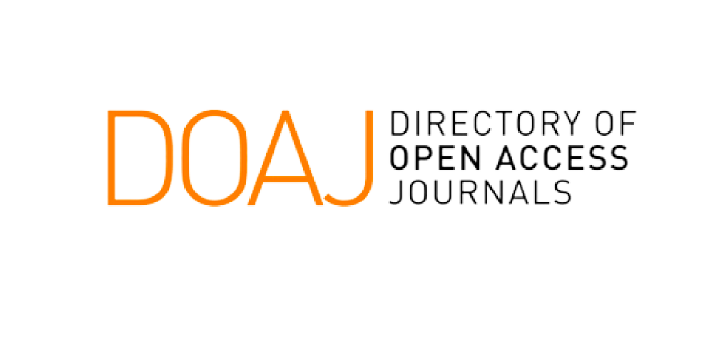KONSEPTUALISASI METAFORA WACANA POLITIK: STUDI SEMANTIK KOGNITIF
Abstract
Utilization of linguistic features of metaphors in political communication leads to diverse interpretations and can lead to conflict. The purpose of this study is to describe the conceptualization of political metaphors in the headline. The data in this study are words, phrases and sentences of political discourse metaphors. The source of data in this study is the title of political news in tribunnews.com January-March edition 2019. The data collection technique in this study uses the documentation, listening and note-taking method. Data analysis in this study uses techniques for direct elements (BUL) and is sharpened by cognitive semantic analysis techniques. The results of this study indicate the use of metaphors in online media politics tribunnews.com covering structural metaphors, orientational metaphors, and ontological metaphors. The tendency of the metaphor used is the metaphor of ontology. This shows that speakers utilize metaphors based on their thoughts and experiences.
Keywords
Full Text:
PDFReferences
Arianto, A. K. (2018). Medan Makna Pembentuk Metafora dalam Syair Arab. Widyaparwa, 46(2), 112–125.
Arnawa, N. (2016). Interpretasi Pragmatis Analogis Metafora Bahasa Bali. Jurnal Kajian Bali, 06(01), 59–80.
Bircan, T. S. (2018). Metaphors of History Teachers Candidates in Turkey on Teaching Profession. International Journal of Educational Methodology, 4(2), 83–93. https://doi.org/10.12973/ijem.4.2.83
Chatti, S. (2019). Metaphorizing deception in political communication: The Wall metaphor in Tunisian electoral politics as a case study. International Journal of Media & Cultural Politics, 15(1), 69–85. https://doi.org/10.1386/macp.15.1.69_1
Degirmenci, Y. (2019). An Examination of Metaphors Regarding The Concept of “Natural Disaster” Developed by Prosepective Classroom Teachers. International Journal of Geography and Geography Education ( IGGE ), 39, 83–94.
Gnanaseelan, J. (2015). The Metaphors on International Intervention : A Discourse Analysis of the Sri Lankan English Newspaper Editorials. International Journal of Applied Linguistics & English Literature, 4(4), 21–35. https://doi.org/10.7575/aiac.ijalel.v.4n.4p.21
Gunawan, R. H. (2019). Rhetorical Metaphor in Barrack Obama Speech Family. International Journal of Multicultural and Multireligious Understanding, 6(2), 817–822.
Haula, B., & Nur, T. (2019). Konseptualisasi Metafora Dalam Rubrik Opini Kompas: Kajian Semantik Kognitif. RETORIKA: Jurnal Bahasa, Sastra, Dan Pengajarannya, 12(1), 25. https://doi.org/10.26858/retorika.v12i1.7375
Hidayat, H. (2014). Pemanfaatan Fitur Metafora dalam Teks Pidato Politik Shinzo Abe Sebagai Perdana Menteri Jepang Ke-96 : Analisis Wacana Kritis. Metalingua, 12(2), 165–178.
Kusno, A. (2017). Karakteristik Gaya Bahasa Kritikan Rizal Ramli: Kajian Analisis Wacana. Aksara, 28(2), 197–212. https://doi.org/10.29255/AKSARA.V28I2.131.197-212
Lyra, H. M., Sobarna, C., Djajasudarma, F., & Gunardi, G. (2016). Citra Hate’ Hati’ dalam Metafora Orientasional dalam Bahasa Sunda. Metalingua, 14(2), 167–176.
Nasution, P. (2015). Entitas Metafora Leksikon Flora Mandailing Terhadap Kebudayaannya. Ranah: Jurnal Kajian Bahasa, 4(2), 200. https://doi.org/10.26499/rnh.v4i2.33
Ocak, G., Ocak, I., & Ozpinar, D. (2016). Turkish Students’ Metaphors about the European Union. International Journal of Instruction, 8(1), 157–172. https://doi.org/10.12973/iji.2015.8112a
Sari, P. (2015). Penggunaan Metafora dalam Puisi William Wordsworth. Dialektika: Jurnal Pendidikan Bahasa, Sastra, Dan Matematika, 1(2), 115–128.
Sariah, S. (2018). Metafora Dalam Iklan Mobil Bekas Di Situs Daring Olx. Aksara, 29(1), 117. https://doi.org/10.29255/aksara.v29i1.105.117-130
Setiaji, A. B. (2019). Struktur Metafora dalam Wacana Narasi. Totobuang, 6(2), 229–244.
Sudaryanto. (2015). Metode dan Aneka Teknik Analisis Bahasa Pengantar Penelitian Wahana Kebudayaan secara Linguistis. Yogyakarta: Sanata Dharma University Press.
Tawami, T., & Sari, R. P. (2018). Metafora konseptual pada wacana retorika politik. Jurnal AKRAB JUARA, 3(4), 59–69.
Tezcan, G. (2019). The Pre- Service Teachers ’ Metaphorical Perceptions about Syrian Asylum Seekers ’. International Journal of Progressive Education, 15(2), 9–30. https://doi.org/10.29329/ijpe.2019.
Wahab, H. A., Abdullah, I. H., Mis, M. A., & Salehuddin, K. (2016). Analisis Eufemisme Kematian Masyarakat Melayu Sarawak dari Perspektif Semantik Kognitif An Analysis of Death Euphemisms in Sarawak Malay Community from the Perspective of Cognitive Semantics. GEMA Online® Journal of Language Studies, 16(2), 53–71.
DOI: https://doi.org/10.21776/ub.waskita.2019.003.02.3
Refbacks
- There are currently no refbacks.
Copyright (c) 2019 Hari Kusmanto

This work is licensed under a Creative Commons Attribution 4.0 International License.









